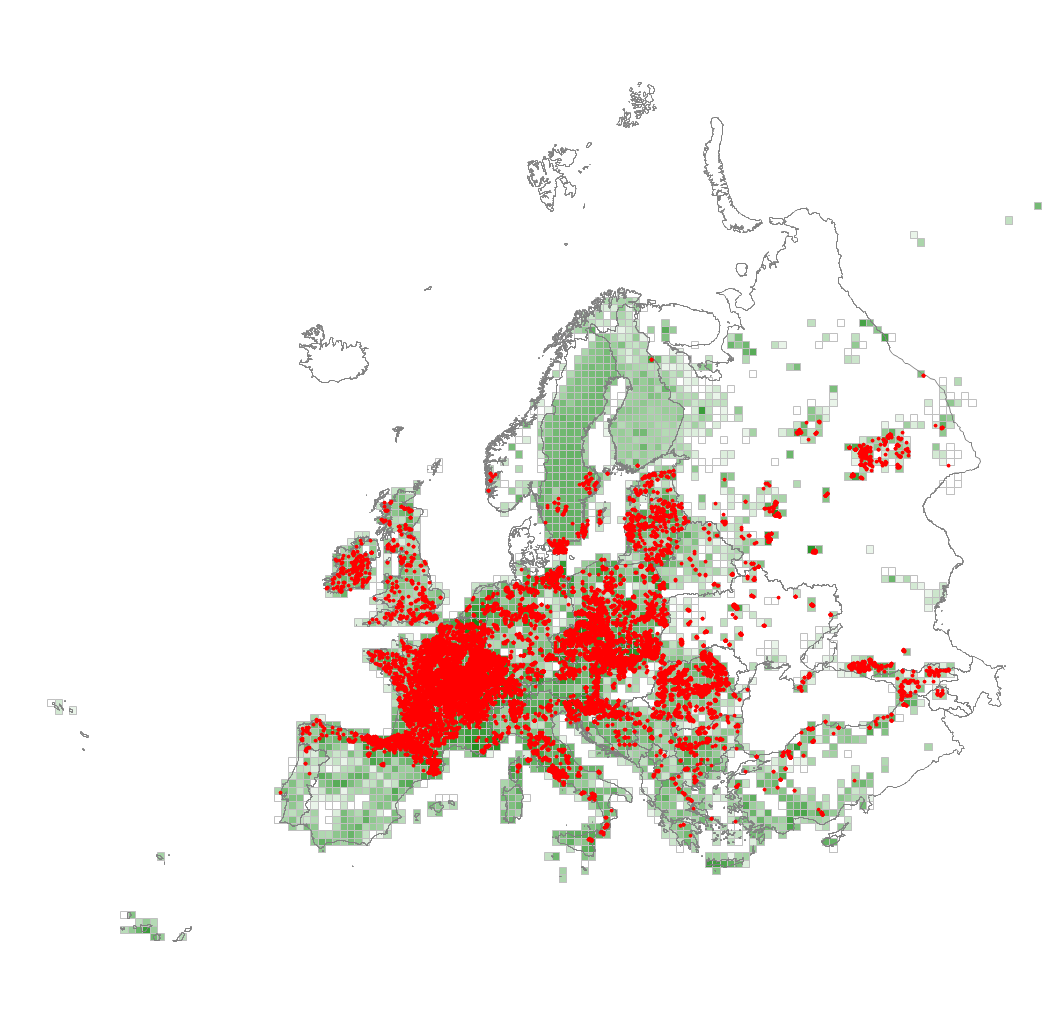T1E Carpinus and Quercus mesic deciduous forest
Deciduous broadleaved forests typical of brown or grey soils of quite low to high base-status and moderate to high nutrient content. They occur across the lowlands and foothills of the temperate zone of Western, Central, Eastern and Southern Europe, with local extensions into regions characterised by submediterranean and boreal climate. Partially this includes alluvial Quercus/Carpinus-dominated forests in mountain valleys with infrequent inundation. The canopy is usually of mixed composition with oaks figuring prominently, notably Quercus petraea and Quercus robur but with regional contributions from other oaks, along with Acer campestre, Acer platanoides, Carpinus betulus, Fraxinus excelsior, Tilia cordata, Tilia tomentosa and Ulmus glabra. Non-riparian and non-ravine forests of Acer platanoides, Fraxinus excelsior, Tilia cordata and Ulmus glabra (without Quercus species and Carpinus betulus) also belong to this habitat. The canopy can have a complex, multi-layered structure including shrubs and lianas while the herb layer can be species-rich with much regional variation in composition.
Chytrý M., Tichý L., Hennekens S.M., Knollová I., Janssen J.A.M., Rodwell J.S. … Schaminée J.H.J. (2020) EUNIS Habitat Classification: expert system, characteristic species combinations and distribution maps of European habitats. Applied Vegetation Science 23: 648–675. https://doi.org/10.1111/avsc.12519
Version 2025-10-03, https://doi.org/10.5281/zenodo.16895007.
For the official presentation of the EUNIS Habitat Classification from the European Environment Agency, please see: EUNIS Terrestrial Habitat Classification 2021. The FloraVeg.EU presentation may show modifications and partial updates to the habitat classification.

4.jpg)
1.jpg)
2.jpg)
3.jpg)
1.jpg)
4.jpg)
2.jpg)
1.jpg)
2.jpg)